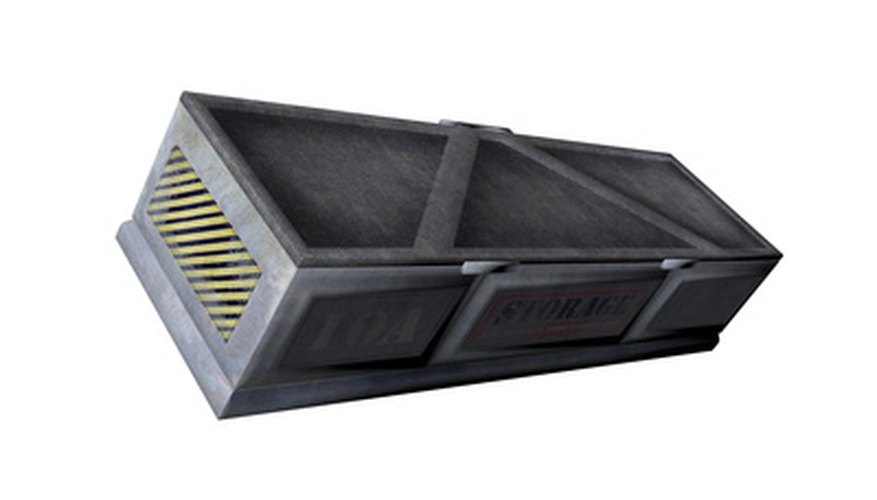Wooden crates can be difficult. They are built to resist punishment.
This makes them challenging, if not impossible to open without tearing them to pieces. Using the right tools can make all the difference. Most home shops have crate-opening tools laying around, but there are speciality tools that make the job faster and easier, without much collateral damage.
Cats Paw
Also known as a "wonder bar" the cats paw is a flat, short crowbar-shaped tool. It gets its name from the curved, flattened end that has a sharp notch with two ears.
The curved part with the notch is placed beside a nail head.
Using a hammer, the "paw" is driven under the nail head where the notch hooks onto the nail. Downward force is then applied to the other end of the bar.
- Also known as a "wonder bar" the cats paw is a flat, short crowbar-shaped tool.
- Using a hammer, the "paw" is driven under the nail head where the notch hooks onto the nail.
The curved end of the bar works like a fulcrum to pry up on the nail, popping it out. Regular old-school crowbars work in the same manner but not as surgically as a cats paw.
Impact Nail Puller
The impact nail puller is used to pull out nails that are deeply embedded into the wood. It has similar function as the cats paw, but uses a set of pincers at the end like you would see on an insect. The pincers are positioned over the nail head. On the back of the handle there is a sliding weight.
The sliding weight is pulled up and then slammed down, driving the pincers into the wood under the nail head. There is a small curved hook above the pincers. It swings down and hooks into the wood. The handle of the nail puller is forced downward. The curved hook acts as a fulcrum, prying the nail out of the wood.
- The impact nail puller is used to pull out nails that are deeply embedded into the wood.
- The sliding weight is pulled up and then slammed down, driving the pincers into the wood under the nail head.
Diagonal Pliers
Diagonal pliers are the most widely recognised of all crate opening tools. They are used when nails break off, digging down into the wood to grasp the broken nail.
- Diagonal pliers are the most widely recognised of all crate opening tools.
- They are used when nails break off, digging down into the wood to grasp the broken nail.
The pliers have a slight bend to them for prying. If the nail refuses to come out with a prying motion, the nail can then be bent back and forth until it gets warm and breaks off.
Fencing Pliers
Fencing pliers are often used when tearing into crates.
Fencing pliers are similar to diagonal pliers, but larger and with a broad curving arc at the top. The pincers are bent 90 degrees and come together perpendicular to the nail. With the broad curve and longer handles the prying action is formidable.
- Fencing pliers are often used when tearing into crates.
- The pincers are bent 90 degrees and come together perpendicular to the nail.
Skill Saw
When all else fails, a skill saw can be used to open a crate with ease. Often times, nails are so deeply embedded that they cannot be removed. By using a skill saw to cut through studs and plywood at strategic locations, the crate will drop open without having to remove the nails.
Cordless Screw Gun
Sometimes, crate lids are screwed on to facilitate opening. When opening crates like these, a simple cordless screw-gun is all that is needed to unscrew any or all screws holding the top or sides on.
Hammers and Hand Saws
No crate opening would be complete without a hammer to bash plywood free from studs when nails or screws cannot be reached.
The hammer also aids the cats paw and crow bar to penetrate underneath wood seams. A hand-held carpenter's saw is also good for cutting in between joints, or anywhere that the plywood will not separate from the studs.
